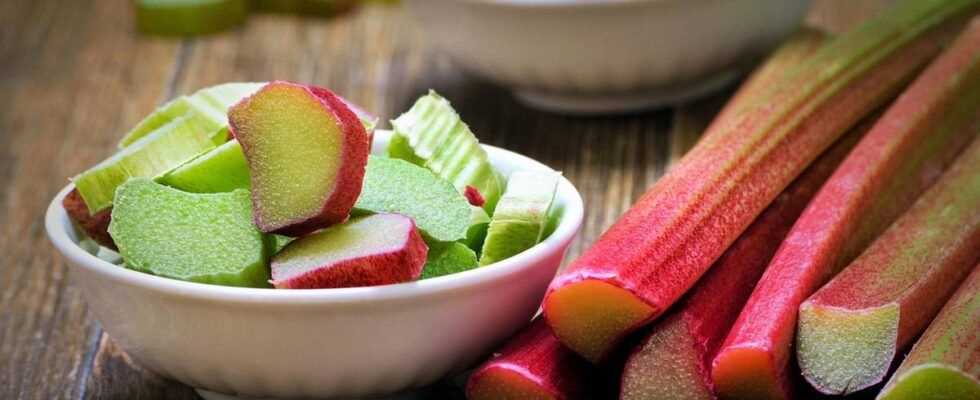Yes, there are people who eat raw rhubarb raw and nibble happily on the fresh sticks. Many also know it from their childhood: Dip fresh rhubarb in sugar and eat it raw. In fact, this is not a problem if it is only one or two sticks – and only the peeled sticks (no leaves!) Are eaten.
When will it be dangerous to eat raw rhubarb?
But you should absolutely refrain from eating large quantities of rhubarb raw. Especially if it is not peeled. Why? Rhubarb contains a lot of oxalic acid (460 milligrams per 100 grams of rhubarb) – and in large quantities it is unhealthy to toxic.
It is generally healthier to eat rhubarb only when cooked and peeled. Because: The skin and the leaves of the rhubarb contain more of the critical fruit acid than the pulp. We explain what you have to consider when peeling rhubarb. Another plus: cooking makes rhubarb generally more digestible!
It is even better to always combine cooked rhubarb with calcium-containing milk products (e.g. vanilla sauce, vanilla ice cream, milk or whipped cream). It binds the oxalic acid that is still present and reduces the risk of poisoning. If you don't overdo it with the rhubarb, you can enjoy it without hesitation.
In our rhubarb recipes we have some delicious ideas for you, including recipes for rhubarb cakes, rhubarb salad and rhubarb jam.
What happens when we eat rhubarb raw?
The oxalic acid contained in rhubarb binds minerals (e.g. calcium, iron and magnesium) and forms complex compounds with them. It can happen that it forms crystals with the body's own calcium, which cannot then be excreted through the kidneys. So there is a risk of Kidney or bladder stones.
Furthermore raw rhubarb attacks the enamel and can form complexes with calcium in the mouth, which then deposit on the teeth. This is why it is important to wait at least half an hour to brush your teeth after eating raw rhubarb. Otherwise you will cause them additional damage.
Are there any differences in raw rhubarb?
There are actually: The content of oxalic acid in green rhubarb is higher than that in red rhubarb stalks. So if you want to nibble a few sticks raw, you'd better go for red rhubarb.
By the way: The content of oxalic acid increases as it grows. The later the rhubarb is harvested, the more of this special fruit acid it contains. After June 24th you should therefore avoid rhubarb entirely – whether raw or cooked. Then the rhubarb season ends.
Who shouldn't eat rhubarb raw?
If you already have one Kidney disease, rheumatism or gout suffer, you should definitely keep your hands off raw rhubarb. Then you'd better cook a rhubarb compote and always enjoy compote or pieces of rhubarb with vanilla sauce or ice cream. Because part of the oxalic acid is lost during cooking and the milk products bind the oxalic acid so that it can be excreted again.
During pregnancy Incidentally, you should completely avoid eating rhubarb – regardless of whether it is raw or cooked, peeled or not. That also applies to the Breastfeeding and for toddlers.
Here you can find out whether you can eat raw potatoes.
